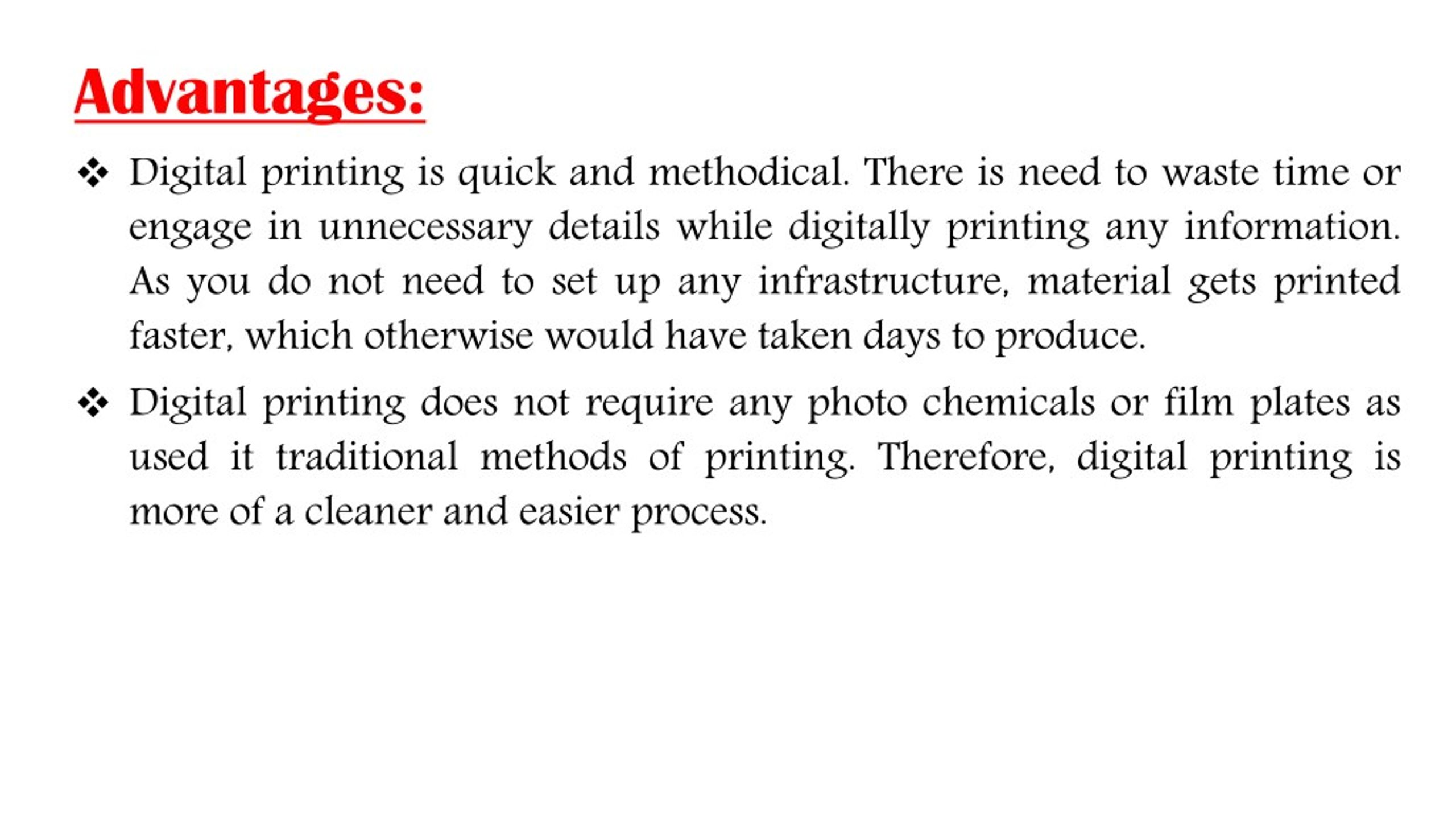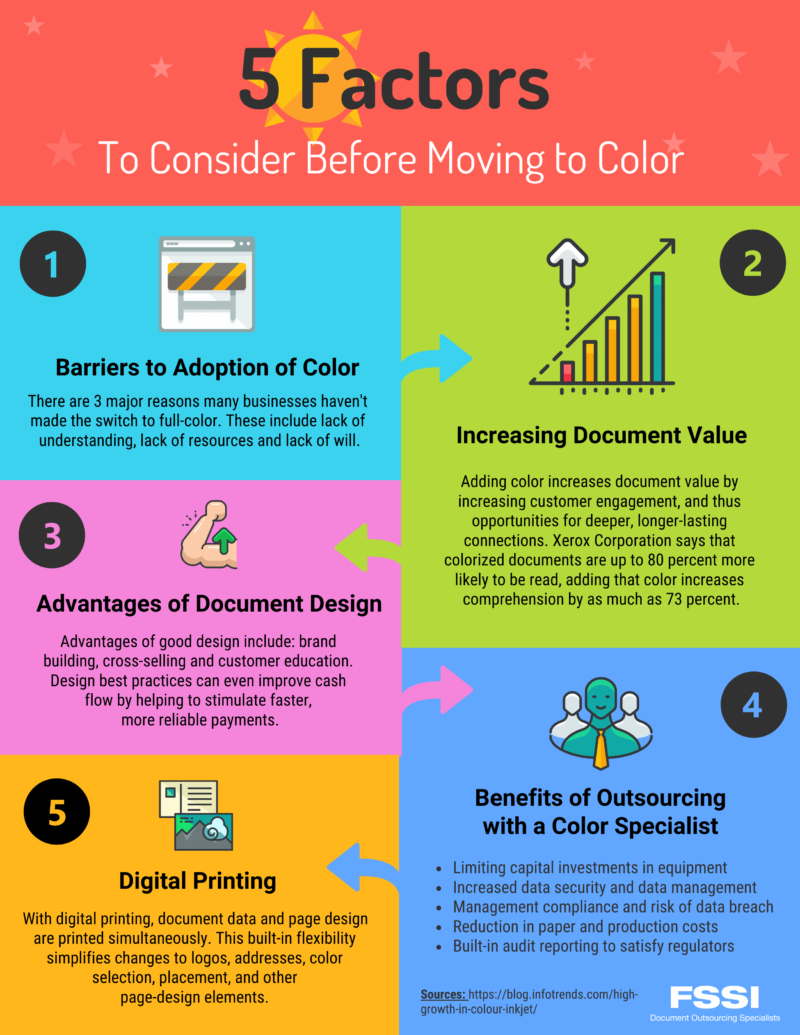Digital Printing Things To Know Before You Get This
Digital Printing Things To Know Before You Get This
Blog Article
4 Easy Facts About Digital Printing Explained
Table of ContentsLittle Known Facts About Digital Printing.Digital Printing Can Be Fun For EveryoneWhat Does Digital Printing Mean?An Unbiased View of Digital PrintingSome Known Incorrect Statements About Digital Printing The Of Digital Printing
Variable data printing, such as direct mail with personalized codes and addresses, is preferably suited for electronic printing. Digital quick printing just needs four steps of style, evaluation, printing and binding to get everything done. Digital fast printing has an unparalleled advantage: print on need.According to PMMI, electronic printing permits brands and suppliers to react swiftly to client demands while enhancing the supply chain, decreasing warehousing cost and waste, and taking pleasure in faster time to market. That all audios wonderful, but how does this modern technology do all that? The major differentiator of these innovations is that there are no set-up fees and no plates with electronic printing.
Some Known Questions About Digital Printing.
According to Wikipedia, the best difference in between electronic printing and conventional methods such as lithography, flexography, gravure, or letterpress - Digital Printing is that there is no need to change printing plates in electronic printing, whereas in these analog printing techniques home plates are continuously changed. This causes quicker turnaround time and reduces cost when utilizing digital printing.
Digital printing is very versatile, so it's simple to make adjustments to the plan style swiftly. It all goes back to the plates.
Much more inventory can indicate even more waste in the future. With conventional printing methods, short-run printing is just not possible. Due to the fact that an excellent layout can make or damage your product, digital printing regularly produces premium, clear and colorful graphics each time. Digital printing on versatile pouches includes the intense, dynamic, and exact graphics that virtually beckon consumers to get to out and touch them.
Digital printing is the procedure of printing digital-based images directly onto a variety of media substratums. There is no requirement for a printing plate, unlike with offset printing. Digital data such as PDFs or desktop computer publishing files can be sent out directly to the electronic printing machine to publish on paper, image paper, canvas, fabric, synthetics, cardstock and various other substratums.
The Facts About Digital Printing Uncovered
According to PMMI, digital printing allows brand names and producers to respond rapidly to customer needs while enhancing the supply chain, decreasing warehousing cost and waste, and appreciating faster time to market. That all noises wonderful, but exactly how does this innovation do all that? The major differentiator of these innovations is that there are no set up fees and no plates with digital printing.
According to Wikipedia, the greatest difference between electronic printing and traditional methods such as lithography, flexography, gravure, or letterpress is that there is no demand to change printing plates in digital printing, whereas in these analog printing techniques home plates are repetitively replaced. This results in quicker turn-around time and reduces price when using digital printing.

Getting The Digital Printing To Work
With conventional printing approaches, short-run printing is just not possible. Due to the fact that a wonderful style can make or damage your item, electronic printing constantly produces high-grade, clear and vibrant graphics each time.

According to PMMI, digital printing permits brands and makers to react quickly to customer needs while improving the supply chain, reducing warehousing price and waste, and enjoying faster time to market. That all sounds wonderful, yet exactly how does this modern technology do all that? The major differentiator of these technologies is that there are no set up fees and no plates with digital printing.
The 8-Minute Rule for Digital Printing
According to Wikipedia, the best distinction in between electronic printing and conventional approaches such as lithography, flexography, gravure, or letterpress is that there is no demand have a peek here to change printing plates in digital printing, whereas in these analog printing approaches the plates are continuously changed. This results in quicker turnaround time and reduces price when utilizing digital printing.
Speedy manufacturing means obtaining your item to market faster. It likewise indicates it's simpler and faster to make modifications later on, when you alter a recipe, include a SKU, or produce seasonal product packaging. Digital printing is highly adaptable, so it's easy to make adjustments to the package layout swiftly. All of it goes back navigate to this website to the plates.

Digital Printing Fundamentals Explained
Digital printing is the procedure of printing digital-based images directly onto a range of media substratums. There is no need for a printing plate, unlike with offset printing. Digital documents such as PDFs or desktop posting files can be sent straight to the digital printing press to print on paper, picture paper, canvas, textile, synthetics, cardstock and other substrates.
Report this page